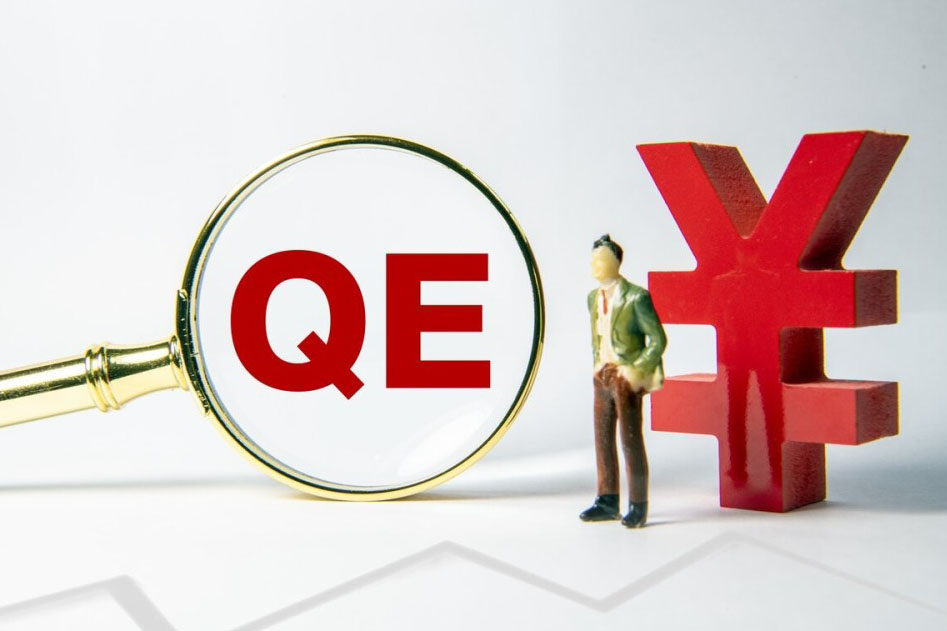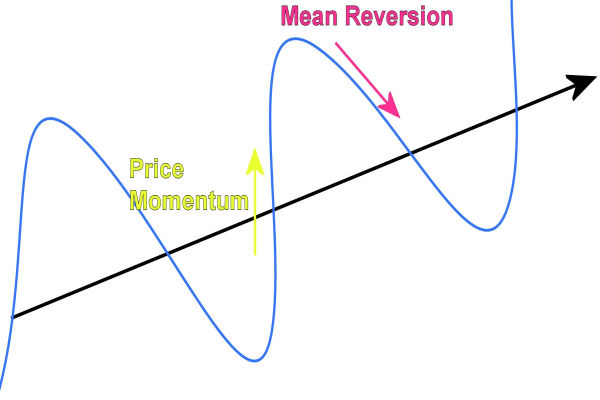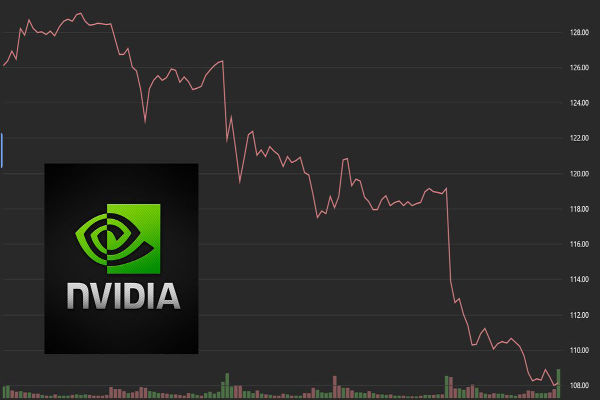What is Quantitative Easing (QE)?
Quantitative Easing (QE) refers to the expansion of a certain amount of currency issuance, while easing means reducing the pressure on banks to inject capital into their reserves. When the securities of banks and financial institutions are acquired by the central bank, newly issued coins are successfully invested in the private banking system.

It mainly refers to the intervention mode in which the central bank increases the basic money supply and injects a large amount of liquid money into the market by purchasing medium and long-term bonds such as treasury bond after implementing the zero or near zero interest rate policy. Unlike traditional tools such as interest rate leverage, quantitative easing is seen as an unconventional tool. Compared to the daily trading of short-term government bonds by central banks in the open market, the government bonds involved in quantitative easing policies are not only much larger in amount but also have a longer cycle.
Traditional vs. Unconventional Monetary Policy Tools
Under normal economic development, the central bank operates through open market operations, generally fine-tuning interest rates by purchasing short-term securities in the market, thereby adjusting interest rates to established target rates; Quantitative easing, on the other hand, is not the case. Its regulatory goal is to lock in long-term low interest rates, and central banks of various countries continue to inject liquidity into the banking system and inject a large amount of money into the market. The quantitative easing of Panasonic's monetary policy implemented by the central bank on the economy is not a fine-tuning, but a powerful prescription.
Since the implementation of QE by the Federal Reserve, the essence of the Fed's approach to reversing economic decline is to invest a large amount of money into the market in a short period of time, forming a "wealth spillover effect", which is expected to be transmitted to the real economy and promote the final recovery of the US economy.
Short-term and Long-term Effects of QE
However, its essence still follows the old path of boosting the economy through consumption, which is not in line with the reform concept of "re industrialization" proposed by the Obama administration after taking office to strengthen the US real economy. Ultimately, it is just a temporary measure to pull the US economy back from the brink of further deterioration. Of course, from the perspective of the Federal Reserve, due to the limited impact of monetary policy on the economy, it is already very difficult for the Federal Reserve to achieve the current level. But if the foundation of the real economy cannot be repaired and developed, even if the future unemployment rate reaches the Federal Reserve's target, it can only be the groundwork for the outbreak of the next round of economic crisis.
Impact of QE on the Global Economy
Since the international financial crisis, especially since the Obama administration took office, the United States has taken a series of economic policy measures to alleviate the crisis and promote economic recovery, while also focusing on solving long-term problems in the US economy and initiating economic structural adjustments. The Obama administration has taken a series of measures to support and encourage technological innovation, promote export expansion, promote "re industrialization," strengthen intervention in economic activities, and promote financial regulatory reform.
Because the deep-seated problem in the US economic structure is that its economic structure and growth model have long-term serious problems, and have reached an unsustainable level. The previous excessive reliance on consumption growth mode in the US has led to rapid personal debt inflation, trade imbalances, especially the sharp increase in imports, and the significant increase in consumer demand is mainly met by imports.
The resulting economic characteristic is that the scale and growth rate of the virtual economy, represented by financial derivatives, are far greater than those of the real economy. The excessive expansion of the virtual economy is likely to form a foam, disrupt the financial order and impact the normal operation and development of the real economy.
Since the launch of QE, although the performance of economic data in the United States has been mixed, there are two main lines that are very clear: the continuous recovery of the real estate market and the delayed improvement of the employment market. This is precisely the best manifestation of the short-term consumption recovery and the ineffective "re industrialization" brought about by the "wealth spillover benefits".
Central Bank Strategies
The central bank can relax monetary policy in two ways: by changing the price of money (i.e. interest rates) or by changing the quantity of money. For many years, orthodox monetary policy has always been centered around a policy lever. However, as the Inflation rate falls back and the short-term nominal interest rate approaches zero, in principle, the central bank can implement expansionary monetary policy in the latter way, that is, quantitative leverage. It is the real interest rate rather than the nominal interest rate that affects economic activities. If the economy is in a state of deflation, the real interest rate will remain positive even if the nominal interest rate is zero. This is what Japan faced in 2000- the nominal interest rate has dropped to zero, but when the real interest rate is positive, the sluggish money demand is still insufficient to make monetary policy work. This is what used to be called the 'liquidity trap'.
There are three main unconventional ways for the central bank to relax its monetary policy. Firstly, the central bank can cultivate the expectation that short-term interest rates will remain low for the long term through communication with the outside world or through quantitative easing. In fact, the main purpose of the Bank of Japan's quantitative easing policy from March 2001 to March 2006 was to do so. For example, in August 2003, the Federal Reserve's Open Market Committee stated in its communiqu é that "adaptive policies will remain in place for a considerable period of time", which is also an example of such a relaxation of monetary commitments. Secondly, the central bank can expand the size of its balance sheet to control inflation expectations. Thirdly, the central bank can change the structure of its balance sheet. If investors view different assets as incomplete substitutes, the central bank's purchase of specific assets will have a significant impact on asset prices. The best example of this is long-term US treasury bond bonds. In theory, the Federal Reserve can buy US treasury bond bonds on a large scale to curb the rise of yields; The Bank of Japan conducted this operation during the implementation of quantitative easing policy. Although the three methods of quantitative easing mentioned above have different concepts, they can replace each other in operation.
Global Inflation Risks from QE
Quantitative easing monetary policy is a double-edged sword. The implementation of quantitative easing monetary policy injects a large amount of funds into the market, which helps alleviate the tight situation of market funds and helps to restore economic growth; However, in the long run, burying the hidden danger of inflation may lead to stagflation when economic growth stagnates. In addition, quantitative easing monetary policy can also lead to a significant depreciation of the domestic currency, stimulating domestic exports while deteriorating the economic forms of relevant trading entities, leading to trade frictions, and so on. For the global economic hegemony of the United States, the impact of implementing this aggressive quantitative easing monetary policy on its own country and the global economy cannot be underestimated.
(1) Quantitative easing monetary policy buries global inflation risks
The essence of quantitative easing monetary policy is to activate the money printing machine to input liquidity into the market without the need for real economy demand. In the absence of market confidence and shrinking investment, the liquidity released by quantitative easing monetary policy to the market will not lead to inflation. However, once the economy improves and investment confidence recovers, the excess liquidity released may be converted into inflation.
Especially for the United States, as the US dollar is the world's reserve currency and the pricing of major commodities in the world is based on the US dollar, the implementation of quantitative easing monetary policy by the Federal Reserve will lead to a significant depreciation of the US dollar, leading to a new round of resource price increases and burying the hidden dangers of global inflation. In addition, the Federal Reserve's massive bond purchase program has knocked down the dominoes. Other economies are competing to implement quantitative easing monetary policies in order to prevent the appreciation of their currencies relative to the US dollar, impact their export industries, and further worsen their economies, further exacerbating future inflationary pressures. This is also why quantitative easing monetary policy has become popular in major global economies in the short term. If quantitative easing monetary policy fails to put the US economy on the path of recovery, economic recession will lead to stagflation.
(2) Quantitative easing monetary policy deteriorates the economic situation of related trading entities
One of the most direct manifestations of quantitative easing monetary policy is the significant depreciation of the domestic currency, which is beneficial for the country's export industry, but on the contrary, it also leads to currency appreciation in the relevant economies. For example, on the day the Federal Reserve announced its massive capital injection plan, the world's major currencies appreciated significantly against the US dollar, with the euro appreciating by 3.5%, the yen appreciating by 2.4%, the pound appreciating by 1.6%, and the Canadian dollar appreciating by 1.7%. This will weaken the export capabilities of relevant trading entities to the United States, especially for export-oriented emerging economies in the midst of the financial crisis. The quantitative easing monetary policies of major global economies such as the United States, the United States, and Japan will further hit them and may trigger trade frictions.
(3) The Federal Reserve's massive purchase of treasury bond reduces the value of foreign exchange assets of corresponding bond holders
Although the financial crisis originated in the United States, due to its strong economic strength and the unique international status of the US dollar, US bonds were once highly popular due to their hedging function. Among the foreign exchange assets of many governments, including China, US treasury bond play an important role. The Federal Reserve's massive purchase of US treasury bond will push up the price of US treasury bond and reduce their yield, thus posing a great risk of depreciation of the foreign exchange assets of the corresponding bond holding countries. On March 18th, the benchmark 10-year US government bond yield fell from 3.01% to 2.5%, marking the largest daily decline since 1981.
For the United States, the devaluation of the US dollar and the reduction of the yield of treasury bond will both lead to the outflow of huge amounts of foreign capital from the United States, which is also a cruel reality that the United States economy, which is still in the vortex of the financial crisis, has to face.
Quantitative easing monetary policy is a very aggressive policy, which can help developed economies in deep financial crises alleviate credit tensions and increase economic expansion momentum. However, from the perspective of its impact on the global economy, implementing quantitative easing monetary policy in major economies, especially the United States, is a beggar-thy-neighbour behavior, planting the seeds of global inflation, And it may lead to further deterioration of the economy of new export-oriented economies, as well as significant depreciation of foreign exchange reserve assets.
Impact on Short-term International Capital Flows
The impact of the Federal Reserve's quantitative easing monetary policy on the Chinese economy:
Under the influence of the Federal Reserve's quantitative easing monetary policy, short-term international capital inflows into China have shown an accelerating trend since 2009. According to the method of errors and omissions, the short-term international capital inflow in the first half of 2009 was 22.8 billion US dollars; According to the residual method, short-term international capital inflows reached $45.2 billion in the first half of 2009.
In the future, with the end of the process of deleveraging international financial institutions, the Federal Reserve will inject a large amount of liquidity into financial marketsFlow to emerging markets including China through various channels. At the same time, the US federal funds rate has dropped to a level close to zero. Recently, China's one-year deposit rate, after four rate cuts, was 2.25%, far higher than the US federal benchmark rate. The possibility of the Federal Reserve raising interest rates in the short term is unlikely, and the situation of the US US US interest rate difference being inverted will continue to be maintained. In this situation, the trend of short-term international capital inflows into China will continue.
Risks of Speculative Capital Outflows
However, once the US economy enters a sustained recovery, the Federal Reserve will gradually withdraw from quantitative easing and tighten monetary policy, leading to an increase in the US interbank lending market and federal funds rates. This will allow the US dollar to appreciate and allow some carry trades to close positions. Once the US dollar stabilizes and strengthens, the interest rate of treasury bond rises, and commodity prices fall, the asset foam may burst. A large amount of speculative funds have withdrawn from China, causing significant fluctuations in asset prices and posing huge risks to China's financial stability. In the 1990s, the asset foam of East Asian countries burst and triggered the financial crisis.
The quantitative easing monetary policy has increased the volatility of the US dollar exchange rate and made it more difficult to reform the RMB exchange rate mechanism. Since the reform of the exchange rate formation mechanism on July 21, 2005, the RMB exchange rate has also undergone significant changes.
US Dollar Appreciation and Its Effects
However, from July 2008 to March 2009, the financial crisis worsened sharply and risk aversion increased. International financial institutions and companies withdrew funds from the United States or exchanged them for US dollar assets, resulting in the appreciation of the US dollar against major currencies. In this context, the RMB has actually returned to the US dollar pegged exchange rate system, and the fluctuation range of the RMB against the US dollar remains between 6.82 and 6.84. In late March 2009, the launch of quantitative easing monetary policy in the United States led to the rise of inflation expectations, increased risk of treasury bond financing and active dollar financing arbitrage transactions in the United States. In addition, the global economic rebound has greatly weakened the demand for the dollar as a hedging tool, and the dollar has depreciated since the funds that use the dollar as a hedge have re pursued high-yield assets. With the weakening of the US dollar, the RMB exchange rate has been depreciating for seven consecutive months since March 2009, with nominal and real effective exchange rates depreciating by 9.17% and 7.67% respectively.
Against the backdrop of the depreciation of the US dollar and the influx of short-term international capital, the pressure of RMB appreciation has once again emerged, and the Chinese government is unlikely to choose a strategy of significant appreciation. Firstly, under the method of significant appreciation, hot money can gain the benefits of appreciation in a short period of time, and the cost of making profits for hot money will be greatly reduced. Secondly, it is difficult for us to find an equilibrium exchange rate point and calculate the appropriate level of appreciation. By adopting a significant appreciation strategy, the RMB exchange rate is likely to overshoot, and there is a high risk of a reversal of capital flows. Alternatively, if a one-time significant appreciation is not achieved, there may be expectations of another appreciation, resulting in excessive inflows of hot money. Regardless of the situation, it will cause a large inflow and outflow of funds, resulting in macro financial risks. Furthermore, a significant appreciation will have a significant impact on export-oriented enterprises, and the economy may experience a significant decline, leading to serious unemployment problems.
China's Response to U.S. Quantitative Easing
The launch of the unprecedented quantitative easing policy in the United States has had the most direct impact on China's monetary policy, which is that China passively follows the United States in making adjustments. If China does not follow the quantitative easing policies of the United States and the world, the RMB may generate greater appreciation pressure and bring more capital inflows. If China follows the policies of the United States, as Chinese households and financial institutions do not have the problem of deleveraging, then China's money supply will be very abundant. Therefore, whether China follows the US monetary policy or not, there will be abundant liquidity, which will promote the emergence of asset price foam. In the medium and long term, China's savings exceed investment, and its trade surplus remains high and in the Demographic window. These factors are difficult to change in a long period of time. In the short term, driven by the influx of hot money and the increase in Chinese exports driven by foreign restocking, global funds are flowing to China, and China's foreign exchange reserves are accelerating again. The pressure for RMB appreciation is increasing, and excess liquidity may once again occur, pushing up prices. Due to the RMB's return to the "pegging" mechanism to the US dollar, according to Mondale's "ternary paradox", the People's Bank of China will partially lose its autonomy in monetary policy when cross-border capital flows cannot be effectively controlled. In this case, China's monetary policy will follow the decline of the US monetary policy. The People's Bank of China will only raise the benchmark interest rate for deposits and loans after the Federal Reserve's signal is very clear, even after announcing a rate hike. In the early stages of inflation, the adjustment of China's monetary policy will rely more on quantitative toolsThe sequence of tightening macroeconomic regulation policies is likely to start with window guidance and prudent supervision, then to open market operations and deposit reserve ratio, which may be accompanied by tightening project approvals before finally entering the interest rate hike cycle.
【 EBC Platform Risk Reminder and Disclaimer 】: There are risks in the market, and investment needs to be cautious. This article does not constitute investment advice.







